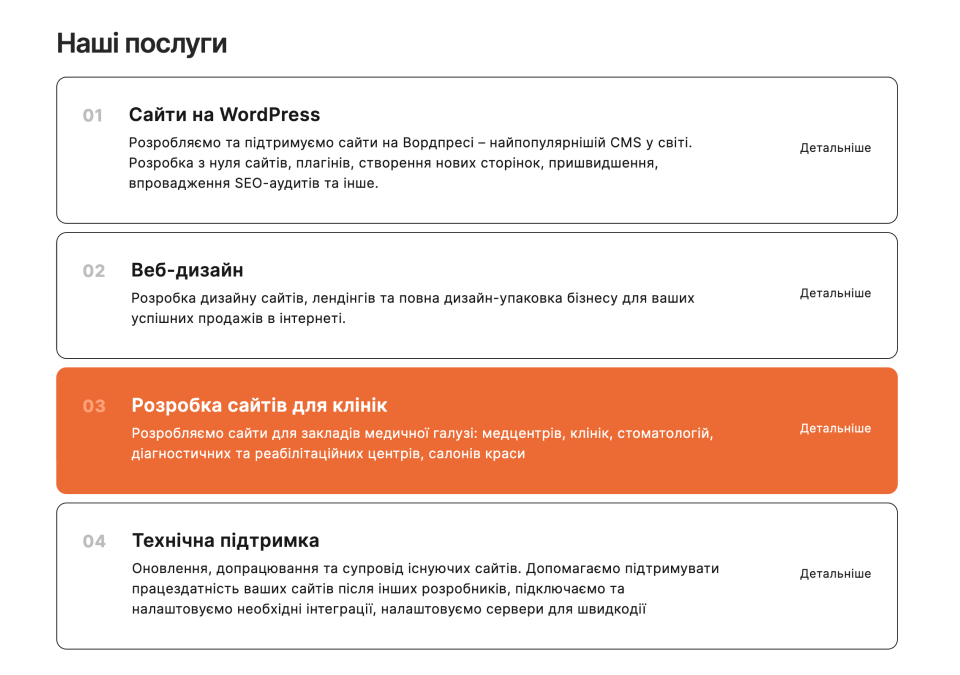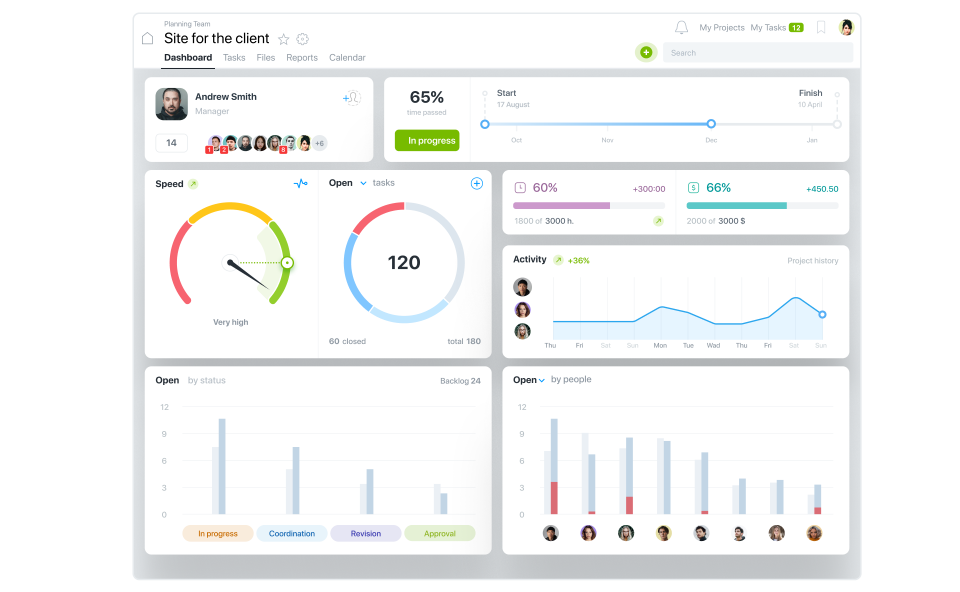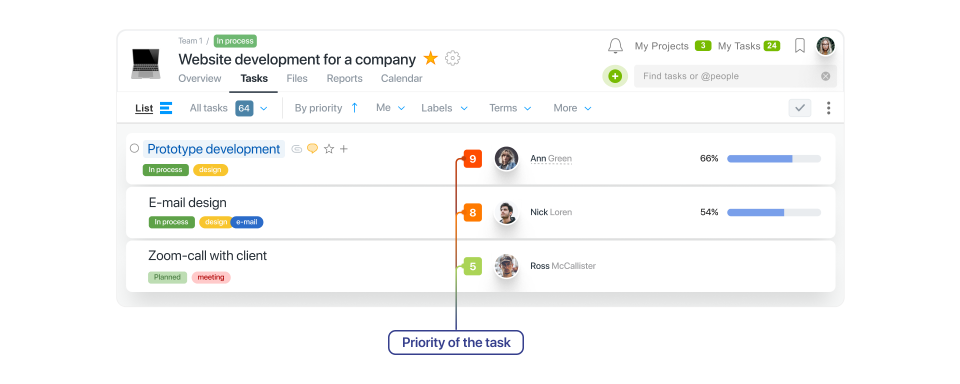Mykyta Lovikov, CEO and founder of the Letsmake.site web studio, shared his experience of using Worksection with us. Besides, Mykyta spoke about interesting insights about success and failure of projects, as well as how prioritization can replace task deadlines.
Tell us about your company
We are the Letsmake.site web studio, we develop turnkey websites. Our clients are small and medium-sized businesses that seek to effectively present themselves online, increase the number of clients or expand their business through entering new markets and attracting search traffic.
Let’s talk about the features of your projects
The result of our projects is usually the creation of a new site or updating the functionality of existing ones. Depending on the format and scale, it takes from 2 to 12 weeks. The development of a full-fledged turnkey corporate website takes on average 6 – 8 weeks.
Usually, 3 – 4 people participate in each project, but for large projects, we involve additional narrow specialists for non-core work. In addition, as the owner of the studio, I am personally involved in the key stages of each project.

Screenshot from the Letsmake.site website
Why do you think unsuccessful projects happen?
Unsuccessful projects occur when a failure occurs during the work on the project. Moreover, most problems in development projects, in my experience, occur because of failures in the work and communication of the managing staff.
If we talk about the success of projects, for me it means positive feedback from the client, the team’s satisfaction with the work result and compliance with the planned profit indicators. And the indicator of this success is the traffic, sales and business growth of my clients, which guarantees my professional growth. And therefore, my profit. That’s why I’m interested in the sites we make being effective, not just pretty.
How did you know it was time to implement a project management system?
I have been using Worksection for a long time, since appr. 2015. I tried it first for personal tasks, then suggested and implemented it in the company where I worked as a marketer at that time. This was preceded by a stage of chaos, notebooks, Google Sheets and Trello. The number of projects increased, switching between boards became more and more difficult.
Therefore, there was a need to organize control of all projects in one place. That’s how I found Worksection. And when I started my own business, I had no doubts about which task manager I needed to organize processes.

Project Dashboard in Worksection
How does Worksection help you at work?
Worksection helped me build a clear business process.
Also, all updates, results of discussions and agreements should be recorded in comments to the specific task to which they relate. There is a list of stages that each task goes through (WAIT, DO, CONTROL, DONE). And there is a responsible person for each stage.
Worksection highlights overdue tasks in red. And when I systematically had the entire service interface glowing red from such tasks week after week, I thought:
Can I control the future? — No.
Am I able to predict the creative process of other people? — No.
All I can do as a manager is to determine what is important to do at the moment and communicate that to the final executor.
That’s when I started using task prioritization instead of deadlines.

The Worksection interface stopped flashing red, the tension in the team’s work disappeared, and the number of successful tasks and projects began to grow rapidly.
What is the key to a successful project?
High-quality planning and work with risks, as well as well-organized project communication between all its participants.
For me, the main criterion of a successful project is the total satisfaction of all parties: the customer, the team and myself as the owner of the studio. And this includes meeting the deadlines/quality/cost of the project for the customer, and the interest of the project for the professional growth of the team, and the planned profitability indicators for me.
Because when someone remains unsatisfied, you cannot call the project successful.
Which companies do you think Worksection would be suitable for?
I know from my own experience that Worksection will definitely suit any small and medium-sized company with up to 20 – 30 people. Although it will also be useful for other industries and large companies, because the system offers a flexible opportunity for any process organization: from sales and marketing to recruiting and onboarding of employees.
I can definitely recommend Worksection as a task and process management system for business, because it has everything you need to organize the company’s work. It is useful and not annoying, and this is very important :)

